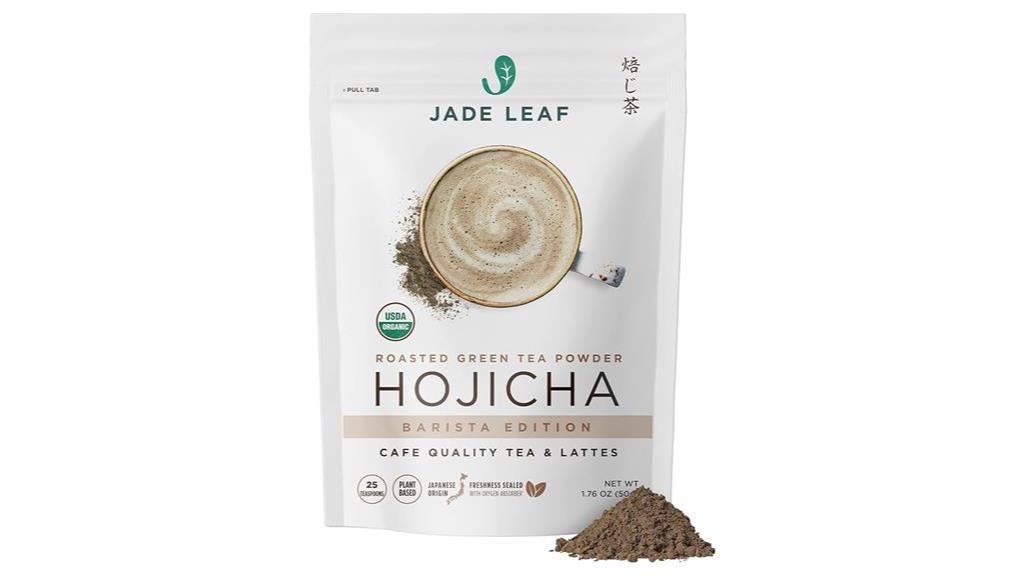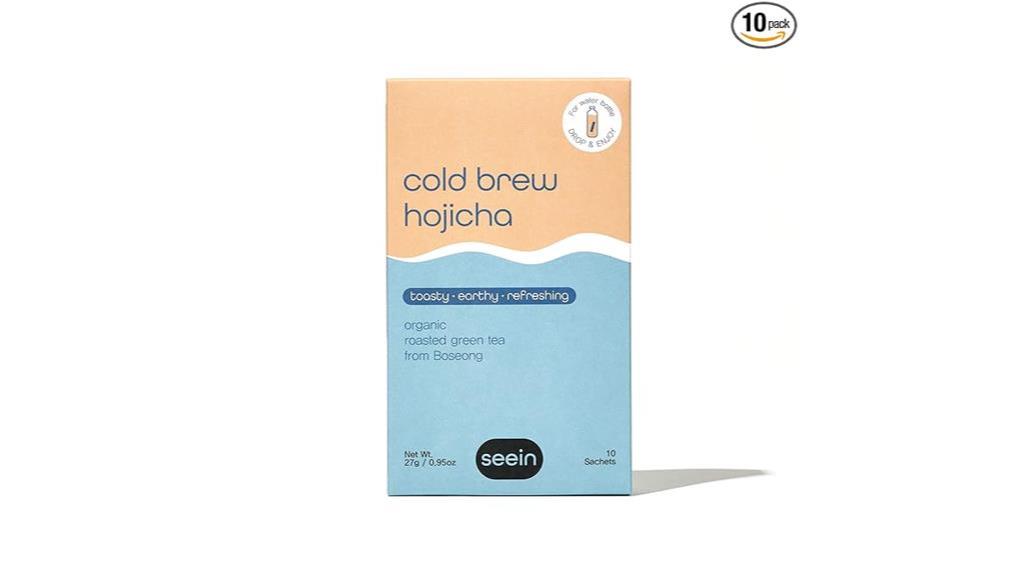Fresh tomato juice offers incredible health benefits, and you'll find it's easy to make at home. Start by selecting ripe, juicy varieties like Beefsteak or Roma tomatoes. You can use a manual juicer, blender, or electric juicer to extract the nutrient-rich liquid. Store your fresh juice in airtight containers for 2-3 days in the fridge, or freeze it for up to a year. From equipment selection to safety tips, there's much more to discover about crafting the perfect tomato juice.
Benefits of Fresh Tomato Juice
A glass of fresh tomato juice packs a powerful nutritional punch while remaining remarkably low in calories.
You'll get essential vitamins A, C, and B6, along with essential minerals like calcium, iron, and potassium in every serving. The high water content (93-95%) makes it an excellent choice for staying hydrated throughout your day.
What sets tomato juice apart is its rich concentration of lycopene, a potent antioxidant that can reduce your risk of heart disease by up to 30%. Studies have shown that tomato juice consumption can lower prostate cancer by 11%.
You'll also benefit from improved gut health, stronger immunity, and enhanced liver function. The fiber content helps manage your cholesterol levels, while the anti-inflammatory properties support workout recovery.
For ideal skin health and cancer prevention, you can count on the protective effects of carotenoids and other phytonutrients found in this versatile beverage.
Essential Equipment and Tools
Now that you understand the health benefits of fresh tomato juice, let's look at the equipment needed to start making it at home. You'll find two main options: manual and electric juicers. Manual juicers are perfect for small households, cost less, and offer great control over the juicing process.
Electric models, while pricier, provide more power and efficiency for larger volumes. These versatile machines often include industrial-grade materials that ensure long-lasting performance and durability.
For the best results, you'll want to invest in essential accessories like cleaning brushes, storage containers, and a food mill or strainer.
If you're planning to juice frequently or in large quantities, consider specialized equipment like masticating or centrifugal juicers. These machines offer superior extraction and can handle whole tomatoes through their wide feed chutes, saving you valuable prep time.
Selecting the Perfect Tomatoes
While juicing success starts with quality equipment, selecting the right tomatoes makes all the difference in creating delicious, fresh juice.
Focus on large, juicy varieties like Big Beef and Beefsteak as your base, which provide ample liquid and balanced flavor. Mixing different varieties helps prevent juice separation during storage. You'll get best results by combining these with flavorful heirlooms like Brandywine or Cherokee Purple.
For consistent juice production, include plum varieties like Roma or San Marzano to add body and concentrated flavor.
Round varieties such as Better Boy and Rutgers offer the perfect blend of acidity and sweetness.
You'll want to mix determinate and indeterminate varieties to guarantee a steady supply throughout the season.
Choose fully ripe tomatoes that feel heavy for their size and yield slightly to gentle pressure – they'll deliver maximum juice and flavor.
Step-by-Step Juicing Methods
Depending on your available equipment and time, you'll find multiple effective methods for juicing tomatoes at home.
The blending method offers precise control – simply blend chopped tomatoes until smooth, then strain through a nut milk bag or cheesecloth.
For maximum efficiency, use a dedicated juicer to extract juice while automatically removing seeds and skin.
If you prefer a low-tech approach, try the grating method. Grate your tomatoes finely, then squeeze the pulp through cheesecloth to extract the juice.
For long-term storage, choose the heated method – simmer chopped tomatoes for 20-30 minutes, strain through a food mill, then heat to 185-195°F before canning.
With each method, you can customize the final product by adding salt, sugar, or lemon juice to taste. For optimal flavor and nutrition, select plum tomatoes which provide a meaty, juicy texture perfect for juicing.
Enhancing Flavor With Natural Additives
Fresh tomato juice offers endless possibilities for flavor customization. To master your juice's taste profile, start with salt to enhance the natural sweetness and depth. Add celery salt or onion salt for a savory dimension, and include black pepper to balance the flavors.
For an herbaceous twist, incorporate fresh basil or oregano. If you're seeking warmth, try ginger, cardamom, or a pinch of cayenne. You'll find that citrus additions like lemon or lime juice not only brighten the flavor but also help preserve your juice. Using 30 pounds of tomatoes typically produces about 8 quarts of flavorful juice.
To achieve professional-grade results, consider using tomato enhancers or concentrate to intensify the flavor while reducing salt content. For complex layers, add Worcestershire sauce or experiment with complementary juices like carrot or beetroot to create your signature blend.
Best Juicers for Tomato Processing
Selecting the right juicer can make or break your tomato juicing experience. For best results, you'll want to evaluate three main types: masticating, centrifugal, and slow juicers.
Masticating juicers like the Super Angel SAJ 7500 and Omega NC800 operate at lower speeds (80-86 RPM), delivering clearer juice with minimal oxidation. The Super Angel produces exceptionally dry pulp residue, making cleanup easier. They're your best bet for preserving nutrients and achieving consistent results. Additionally, these juicers can help improve digestion by retaining beneficial enzymes and nutrients from tomatoes.
The Omega VSJ843's vertical design saves counter space while maintaining quality.
If you're prioritizing speed, centrifugal models like the Breville Juice Fountain series operate at over 10,000 RPM. However, you'll sacrifice some juice clarity and get more pulp.
For maximum nutrient retention, assess slow juicers like the Kuvings Whole or Tribest Green Star, which carefully extract juice while maintaining enzymatic properties.
Storage Tips and Shelf Life
Once you've successfully juiced your tomatoes, proper storage becomes essential for maintaining freshness and nutritional value. You'll need to decide between three storage methods based on your timeline needs.
For immediate consumption, store your juice in an airtight container at the back of your refrigerator, keeping the temperature between 35°F and 40°F. You'll have 2-3 days to enjoy it at peak quality. This storage method helps preserve the juice's rich vitamin C content, which provides nearly your entire daily requirement in just one cup.
If you're planning for long-term storage, freeze your juice in portioned containers with one-inch headspace, giving you up to a year of shelf life.
For the longest preservation, opt for canning with proper acidification and processing times. You'll need to add lemon juice or citric acid before processing, but your juice will stay fresh for 12-18 months when stored in a cool, dark place.
Health and Safety Guidelines
While proper storage helps maintain your juice's quality, following strict health and safety protocols guarantees it's safe to drink in the first place. Start by washing your hands for at least 20 seconds with soap and warm water before handling any produce.
Thoroughly rinse tomatoes under running water, using a clean produce brush to remove dirt and bacteria. Cut away any bruised or damaged areas, as these can harbor harmful bacteria. When preparing tomatoes for juicing, carefully inspect and trim discolored portions.
If you're not pasteurizing your juice, be aware that it may contain harmful bacteria from raw produce. For safer consumption, heat your juice to 185-195°F before drinking. Those with health conditions should exercise caution: if you have acid reflux, kidney problems, or blood sugar concerns, consult your healthcare provider about consuming tomato juice, as it's high in potassium and natural sugars.






Konnichiwa! (Hello!) I'm Pat Tokuyama, a Japanese tofu cookbook author, who travels for music, food, and adventure. If you like Japanese tea, checkout some of the newestorganic japanese tea, matcha bowls and noren and more!
** Curious about the Plant Based Japanese Cooking Club? ** Learn more here!